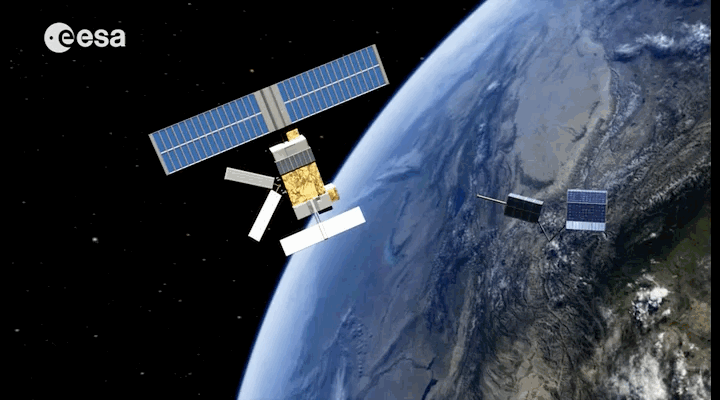Space debris problem
- Transfer

Each of us knows that mankind has incredibly messed up its planet and continues to generate an incredible amount of garbage every day. But few know that for a short period of space exploration we managed to turn the near-Earth space into a small dump of spent satellites. Here are two interactive visualizations that reflect the current situation.
The first visualization (by Alex Rasmussen ) reflects all known and tracked satellites and debris:
- Green dots indicate active satellites.
- Gray - inactive, but operational.
- Red - failed satellites and their debris.
The European Space Agency has established that around the Earth now revolves:
- about 29,000 fragments larger than 10 cm
- about 670,000 fragments from 1 to 10 cm,
- more than 170 million fragments from 1 mm to 1 cm.
The total mass of debris in the near-Earth space is estimated at 6300 tons, the flight speed can reach 56,000 km / h.

Link to the interactive version .
Over the past 50 years , about 6,600 satellites have been launched , of which 3,600 are still orbiting the Earth, and 1,000 are in active mode.
How dangerous is all this garbage?
The presented visualizations can mislead our mind, because the dots indicate only the location of the fragments, but not the size, that is, the scale is not respected. In reality, near-Earth space is not at all a dump, as it looks in the pictures. However, space agencies of different countries are still on the lookout, because the cost of launched objects is very high, and the potential damage from the loss of 1000 satellites currently operating as a result of collisions with debris is estimated at $ 130 billion.

Each year, 100-150 tons of debris enters the earth’s atmosphere. The most remarkable case in recent years was the collision of German and American satellites.whose debris fell into the Bay of Bengal in 2011. Astronauts in orbit also should not relax (hello "Gravity"). In 2012, the ISS was transferred to a higher orbit to prevent collision with debris from a Japanese satellite.
What to do?
Fortunately, the repetition of a script in the image of Gravity is unlikely. Moreover, the engineers provided for a lot of protective equipment (the ISS is considered "the most protected spacecraft in history "). However, flight speed and a growing number of debris pose an increasing threat. Scientists are warning about the possibility of Kessler syndrome when there are so many debris in orbit that the risk of destroying any launched vehicle will become very high. Such a chain reaction can, in fact, block access to space for humanity.
Today, scientists are looking for ways to track debris and clean up outer space. One of the many ideas is to use special satellites that will capture debris and direct to the surface of the planet. Also considered is the option of collecting still usable debris for reuse.
Whatever method is chosen in the future, one thing is certain: littering the nearest outer space will cost us dearly. If we want to continue to have access beyond our planet, to have modern satellite communications, observation and research, then we must already begin to study possible ways to get rid of orbital debris.




Follow the linkon the original article, you can appreciate the interactivity of visualizations. Unfortunately, Habr does not allow to embed them in the post, I had to take screenshots.
